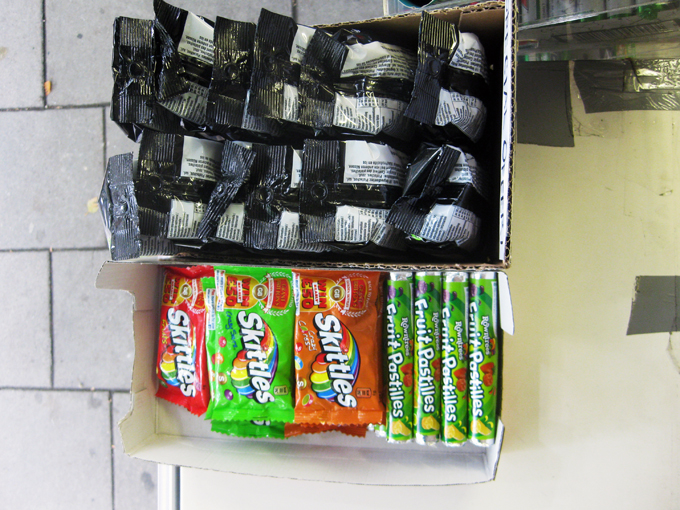The label-maker has been acting up at one of the kiosks I visit. It tends to over-ink, the roll of sticky labels jams, and the digits don't turn as they're supposed to. The result has been a remarkable material diversity of price tags, even more varied by the number of people who use this machine -- some including additional zeros, others omitting the decimal or pound sign.

Due to this mechanical dysfunction, many of the newer prices have been handwritten, sometimes directly on the product box. Still others were printed with the aid of a computer when the kiosk opened. All of this results in an incredible array of price labels displayed across products and also layered on top each other, showing changes of prices and styles through time.
For the most part, prices are posted for kiosk employees to limit confusion and fluctuations... an occasional challenge for cash businesses without UPC scanners. Should the blotchy ink make labels undecipherable, prices are also presented behind the counter on a piece of weathered paper in neat capital letters.

Due to this mechanical dysfunction, many of the newer prices have been handwritten, sometimes directly on the product box. Still others were printed with the aid of a computer when the kiosk opened. All of this results in an incredible array of price labels displayed across products and also layered on top each other, showing changes of prices and styles through time.
For the most part, prices are posted for kiosk employees to limit confusion and fluctuations... an occasional challenge for cash businesses without UPC scanners. Should the blotchy ink make labels undecipherable, prices are also presented behind the counter on a piece of weathered paper in neat capital letters.
























